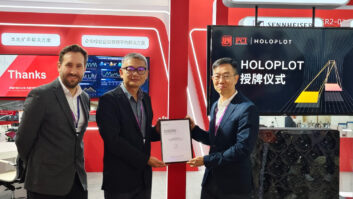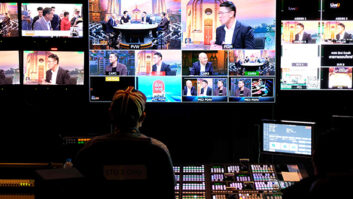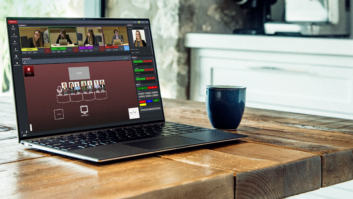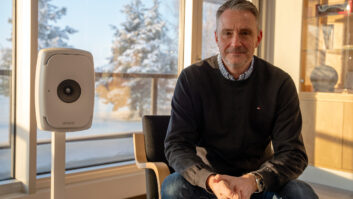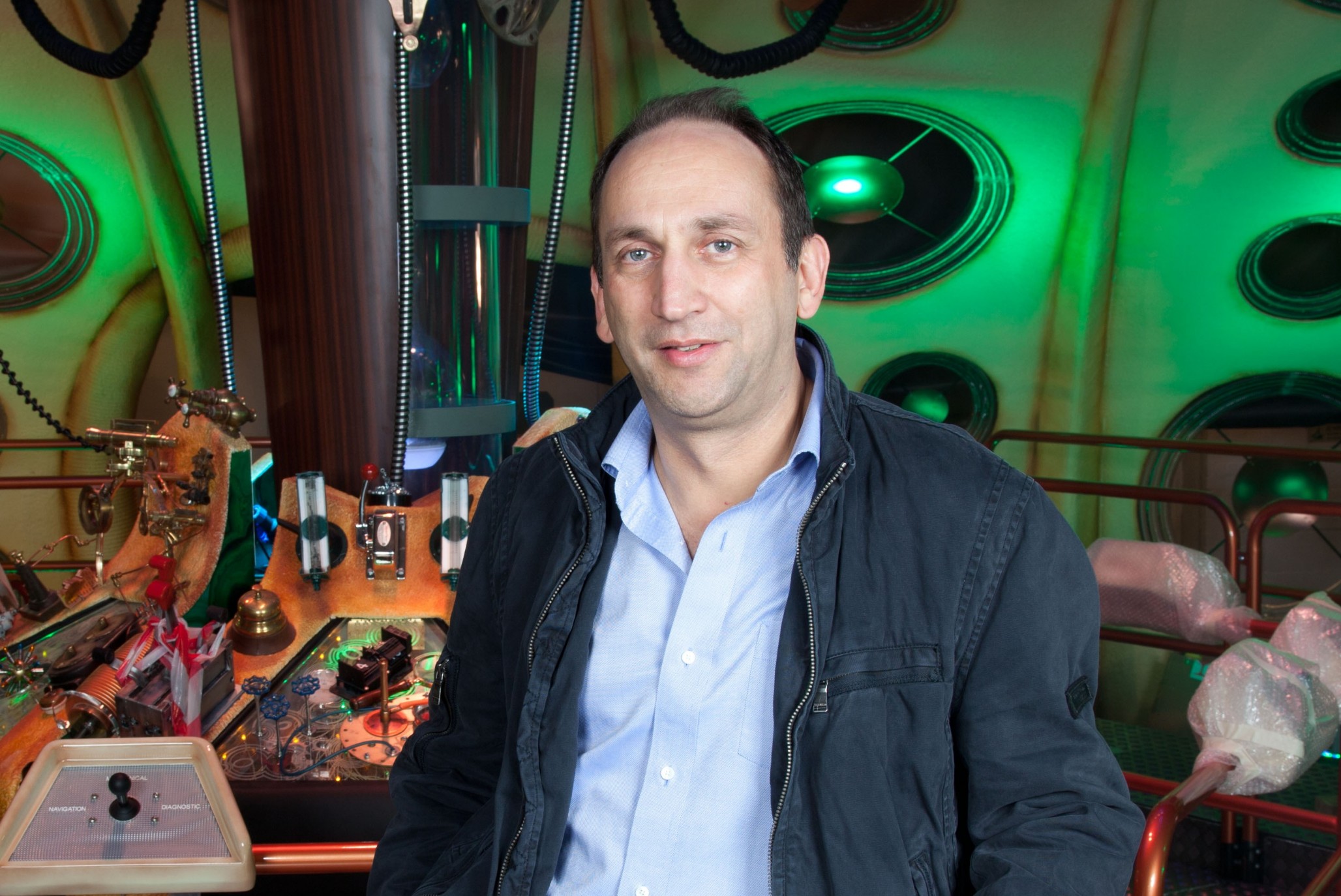
Ross Magri is technical director of one of the world’s leading integrators of leisure attractions and museums. He talks to Paddy Baker about Doctor Who, the evolution of AV technology and how to stay ahead of audience expectations.
You have a degree in audiovisual media and photography. When did you get the first inkling that you might follow a career in the AV field?
From a very young age I had an interest in art and technology, and I could never take sides either way. During my teenage years I met Ron Bewley, who was one of the very early users of synchronised projection technology – he did the London Experience, the New York Experience and others. I met him in Malta, and spent some time helping him, taking photographs and setting up the kit. That was when I learned about mixing technology with photography, film and projection and the design and creation of immersive shows. So that’s what really started my interest.
Sarner worked on the revamped Doctor Who Experience in Cardiff. Did you treat this as a refresh or as a completely new project?
It is a refresh. As you know, Matt Smith has regenerated into Peter Capaldi, and so we had to link that to the Experience to stop it becoming dated. In terms of the actual experience it is a lot more than a refresh – it’s a continuation of the story. But from the technical point of view, we looked at it as a refresh: a lot of the technology is what we had originally installed, although it’s used in a different way. We do have a lot of new lighting and effects, and we have some crystals that interact with visitors, but the control systems, the amplification, the speakers, the projection technology are what we originally installed. The content has changed more than the technology.
Doctor Who has been enjoyed and loved by generations of viewers – as well as being one of the BBC’s highest-earning brands. Do you feel a greater responsibility when a project of this kind comes along, or are you able to treat it in a detached, goals-and-objectives way?
Certainly every project is important to us and to the client. What’s unique about the Doctor Who Experience is the expectations of the visitors – the people who visit the attraction are as knowledgeable, or more knowledgeable than we are about the history of Doctor Who – so we have to be very accurate in terms of how it’s presented, detailed and described. A lot of times with other projects you don’t have such a critical audience. If it’s a museum about glaciers or an attraction about history, the information is new to a lot of the visitors; whereas people have grown up with Doctor Who and the detail, the accuracy of everything that’s installed has to be close to the stories or the history of the programme.
Looking at that in a broader context – in general, how do you judge how much understanding of the subject of an attraction you need as an integrator?
As a company we’re in a unique position because we’ve created the design as well as the technology. Our writers, producers, directors and scenic artists are part of the Sarner team and have come up with the ideas, so it’s a very good relationship and there isn’t a conflict between the technology and the creation of the content. It’s very much a joint effort where we look at each subject, creatively design the solution and then look at the technology to fulfil that. It’s never been the technology leading the creative – it’s very much in the background. You see the product of the technology.
We frequently start with a blank sheet of paper to come up with creative ideas, then we sit down and talk about how to achieve them technically. So the question of whether the technology is in line with the story never arises because the technical solution is chosen to achieve the creative vision.
Cast your mind back to working with Ron Bewley – can you compare and contrast the technology then with what there is today?
It was the days before the Amstrad and the Sinclair. At the time computers were something I had read about and when I found out that it was feasible to use them to control projectors it was very exciting – I could see the potential to use the technology for something creative and artistic.
At the time the control system was AVL, which was very basic; however the principles, what was used in terms of the projection and the mix between images, sound and technology is still true today. The technology has become more sophisticated: companies like AV Stumpfl and Dataton have taken over what was started on slide projectors, now using video projection – but the production process is not unlike how it was with slides.
In the old days, slides used to jam in the gate; reel-to-reel tapes would wear out and sometimes break; and film would snap, so you would have to splice it on an almost daily basis. The product that we deliver nowadays is much more robust and reliable; but although the equipment has changed, it’s still basically the same process to create the experience.
Would you say that the technology has developed fairly linearly, or was there ever a ‘eureka’ moment when you could suddenly do much more than before?
I think it was a linear process. Especially with permanent installations, we’re always keen to make sure equipment is reliable and robust. Because it’s difficult for a client when you get equipment failures – so we’re always cautious about using the very latest technology unless there’s no other choice. So most projects evolved over the years; as technologies became more robust we embraced them and made them part of the attractions that we built.
Do you have a favourite project that you’ve worked on – or is that an unfair question?
Each project has its own history and its own uniqueness. They become part of your life – having spent weeks and months on site, starting from nothing to deliver the whole project, you can’t help become attached to them. The Doctor Who Experience is unique in its own right – it’s a successful project, it’s very immersive, it’s got a great story, and it’s a living programme as well. However, there are a lot of projects we did that are historically based or entertainment based that we are also very proud of.
Are there any things you watch out for during a project that suggest that things maybe aren’t going to go smoothly?
Normally the audiovisual people are the last ones in on site. The final deadline never moves but all the other deadlines within the project might slip, and when that happens, it’s the last part of the project that gets squeezed. You start with a fair amount of contingency, but by the end you can find that you’ve not only used the contingency – the weekends and the nights – you’re bordering on your ability to deliver the project.
That’s often the case where there are building works – they frequently go over the deadlines they aim for. With an AV installation you need a clean site, and power, and security; you can’t really cut corners. When we have done that, under pressure, we’ve suffered the consequences.
How do you see the themed attractions sector developing over the next few years?
Technology is having a huge impact on what it’s feasible to deliver. Technologies like projection mapping filter from big-budget, high-profile projects to the smaller ones. Similarly with things like 4K video – and now there’s 6K and 8K which haven’t really touched the commercial market. I know that for our next project and the project after, we’re looking at using 4K as standard because of the benefits it brings. As technologies evolves, prices fall and products become more robust, and it becomes feasible to use them in projects.
And in parallel with that, audiences’ expectations are continuously increasing. Does that worry you?
I wouldn’t say it worries us – I think it pushes us to continuously come up with new ideas and solutions to ensure we’re always a step ahead of what people can have at home. In the past people had a limited amount of technology at home: if you wanted to play a computer game you went to an arcade and the graphics were beyond what you had at home. That’s not the case any more, but we can stay one step ahead because at home your screens are small, your immersive experience is limited; whereas we can do things on a much bigger that can be designed specifically for attraction. We can engage all the senses – whether it’s using smell, moving floors, wraparound screens for projection – so there’s still huge scope to go way beyond what is feasible at home.
Finally, do you have any unfulfilled ambitions? And do you have any hobbies away from the world of AV integration?
We always aim to deliver a robust, reliable product that is practically maintenance free – that’s been an ambition from a very young age. Although reliability has improved a great deal and continues to improve, there’s still huge scope to make systems a lot more robust and reliable. If I had an ambition it would be finding a way to deliver maintenance-free projects. LED technology for projectors is still in its early days, but it’s changing rapidly and in a year or two it will be feasible to use it in projects. In lighting, LED is standard; in playback, solid state is standard. So we’re getting there, but I don’t think we’re there yet.
Regarding hobbies – I always enjoyed photography when I was young; now it’s become part of my work it’s become more difficult to do it as a hobby. But if I was to have more free time it’s something that I would spend more time on than I do at the moment.
